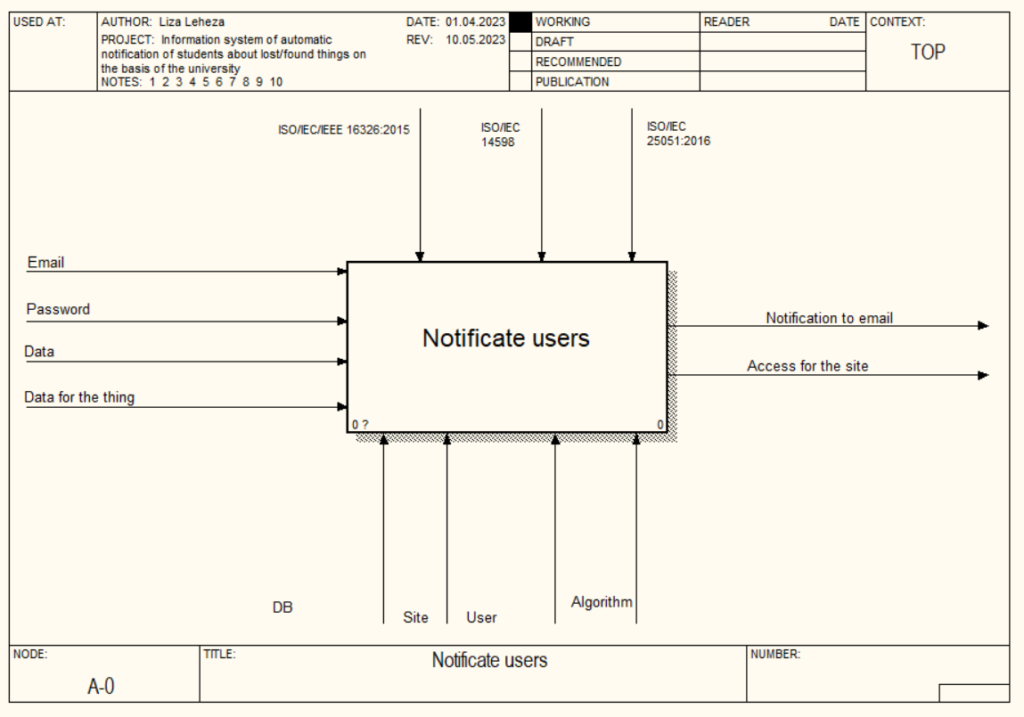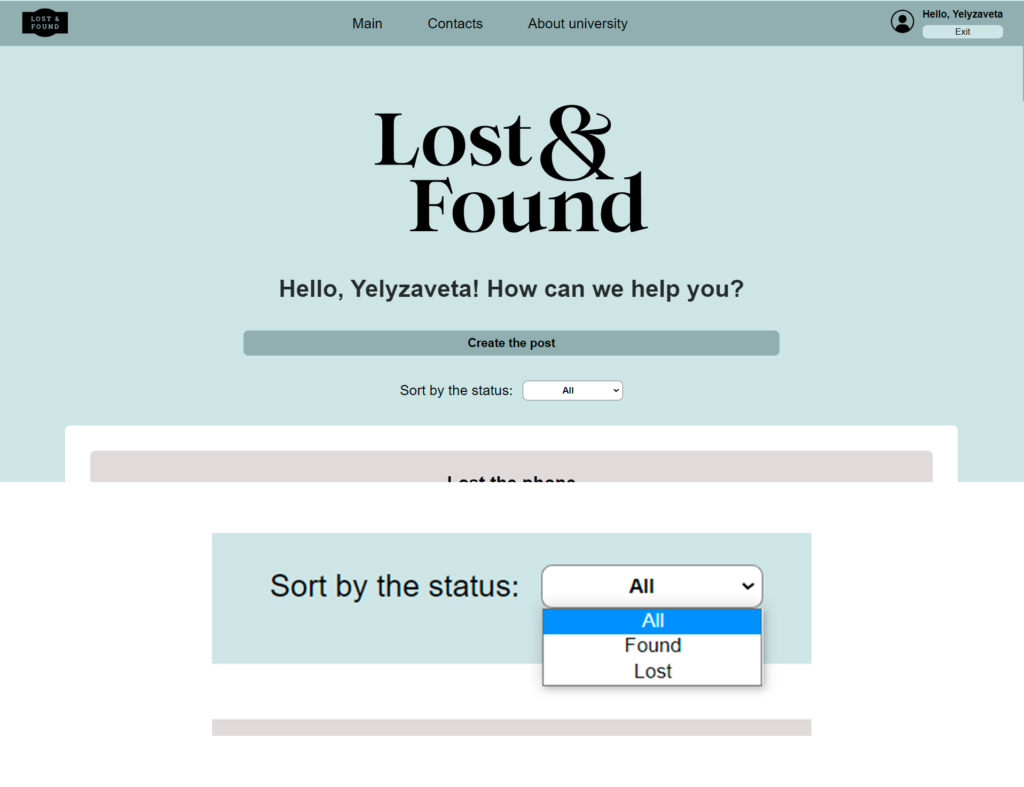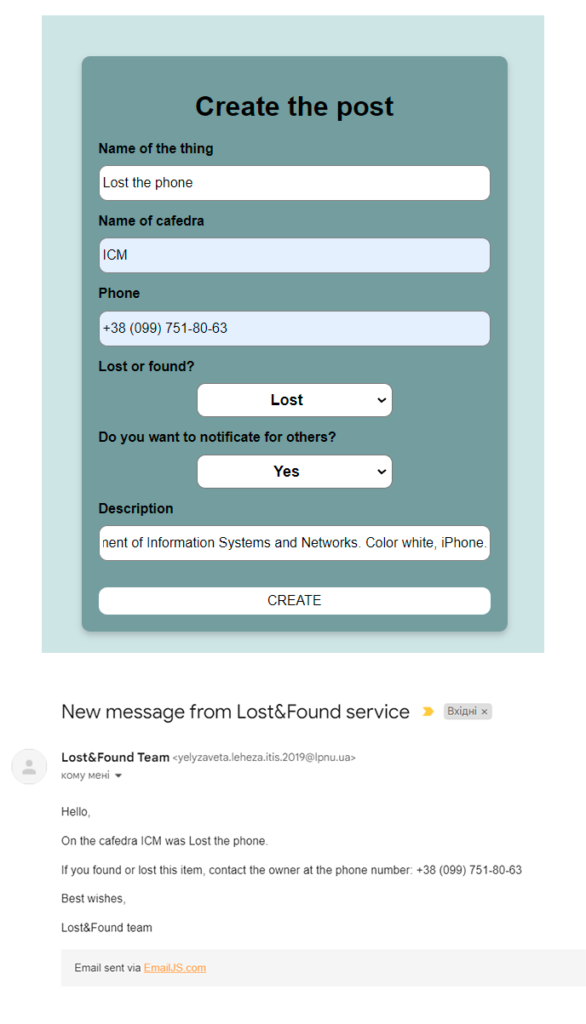Yelyzaveta Leheza, Lviv Polytechnic National University, Ukraine
Oleksandr Lozytskyy, Lviv Polytechnic National University, Ukraine
Introduction
To be successful, projects must address a relevant and specific problem. In the modern world, the issue of losing things is quite significant. Finding lost items or returning them to their owners can be challenging due to the inconvenience of the processes involved and the lack of automation. In collaboration with the international research agency OnePoll, Samsung Electronics conducted a study on the factors contributing to forgetfulness in people and the most commonly lost items. The study revealed that over a third of respondents identified stress (56%), isolation (44%), and fatigue (41%) as factors leading to increased absent-mindedness from 2020 to 2023. On average, individuals spend approximately 140 days searching for lost items and incur significant expenses on replacements. Smartphones, TV remotes, car keys, headphones, tablets, and other gadgets are the items most frequently reported as lost during this period. The survey also indicated that over half (56%) of the respondents reported losing something about twice a week, which is twice as often as before. The main reasons for this increase were the aforementioned factors.
Therefore, after analyzing the existing problem, it was decided to propose a solution for at least a portion of it. For instance, the challenge of finding lost items at the university is a problem that impacts university students, and a potential solution to this issue is the development of an information system [1]. Several alternatives were examined, including Poisk.ua, VARTA1, Olx, and Verni.com.ua. These alternatives are well-known online and each has its own advantages and disadvantages. For instance, some lack authorization or sorting capabilities. Moreover, none of the alternatives support automated user notifications. Hence, all the available information regarding the analogs of the information system was collected, and a solution was proposed. This system will automatically send students email notifications regarding lost or found items on campus, enabling them to report such incidents promptly and effortlessly. By facilitating direct communication between students and the university administration, the system can help safeguard personal belongings and streamline the lost and found process.
MAIN RESULTS OF THE WORK
The research findings reveal the significant impact of the issue of lost and found items. The proposed information system has the potential to extend beyond educational institutions and become a global solution in the future. Its objective is to reduce the occurrence of lost items by enabling fast and accurate automated notifications, accompanied by a user-friendly interface. To implement the automatic system, specialized software development is necessary, which should be adaptable to various platforms and devices, including mobile phones and computers, and ultimately launched as a website.
Modeling systems and processes using IDEF offers a flexible and adaptable approach, allowing systems to be represented at different levels of complexity and detail based on specific needs and requirements. Figure 1 displays an IDEF0 diagram that illustrates the functioning of the primary process in the information system, supporting the automation of notifications for lost and found items.

The main process is user notification. The input data includes login, password, item information, and email. All of the mentioned data must be provided to initiate system usage. The system incorporates the following control measures [2]:
- ISO/IEC/IEEE 16326:2015: Development of Systems and Software.
- ISO/IEC 14598-6:2005: Evaluation of Software Products.
- ISO/IEC 25051:2016: Requirements for the Quality of Systems and Software Products and Their Evaluation.
By utilizing a context diagram and breaking it down into smaller components, we can establish a process hierarchy. At the top, we have the main task of “User Notification.” To accomplish this task, several sub-tasks need to be completed, including logging into the user’s personal profile, creating a post on the website, searching for the necessary notification list, and initiating the notification process. Each of these tasks has its own set of subtasks that must be fulfilled to achieve the overall objective of user notification.
The mechanisms used in the system include a data search algorithm, a server database, a website, and a user. The output of the system is the notification results and access to the system. A set of programming languages that could be used to implement the information system was considered. Various programming languages that can be used to implement the selected information system were considered. All languages were compared with each other according to various criteria that are important for the implementation of the system. The best option turned out to be the JavaScript language – thanks to its progressiveness, concise syntax, ease of learning, wide possibilities, the fact that it is used by similar analogues or platforms with similar functionality and the presence of many libraries and frameworks, such as Angular and React.js, which is lacking in PHP programming language. Among the auxiliary JavaScript libraries, React.js was chosen because this option is much easier to learn and does not require additional knowledge of other languages from the developer, as is the case in Angular with TypeScript.
Regarding the development environment, Visual Studio Code was chosen precisely because it is free and contains a large number of interesting built-in plugins, both for the convenience of writing code and for development in general.
Following the analysis and design phase, a system for automated notification of lost and found items to university students was developed and implemented. The operational process of the system is illustrated in Figures 2 – 4.
After logging in to the website, the user will be directed to the homepage, where they will encounter a login form to access their account. To proceed, the user must enter the credentials that were provided to them earlier by the system administrator. These credentials should include an email domain of lpnu.ua.

After successful authentication, the user will gain access to the main screen, which displays all the posts. From there, they will be able to contact the authors of the posts. Furthermore, the user will have the option to sort the posts based on their statuses: “Found,” “Lost,” or “All.”

If the user prefers not to contact the authors of the posts directly or intends to create their own post, they can click the “Create Post” button and provide the required information in the corresponding form. Once submitted, the newly created post will be displayed in the main post feed and stored in the server database. If the user opts for automatic notifications to all other users regarding the post, the service will send notification messages to those users.

Further research will focus on expanding the functionality and developing modules for integration with other systems.
Conclusion
In this research, a comprehensive analysis of the concept of an information system, specifically an automated information system, was conducted in the initial stage. Additionally, a detailed examination of all known analogues on the internet was performed to identify their strengths and weaknesses.
During the subsequent phase of the research, a system analysis of the developed system was carried out. This involved constructing an objective tree, defining quality criteria, and using the Analytic Hierarchy Process (AHP) method to select the system type. To delve deeper into the system’s processes, a context diagram was created, and its decomposition was performed using the IDEF0 methodology.
A prototype of the system was implemented, which involved connecting all the necessary mockapi.io services. User authentication, data storage, post creation, and the inclusion of information and photos were incorporated, along with the ability to send automatic notifications to other users regarding newly created posts.
In the final development stage, the application underwent testing. This encompassed user registration, form completion, data storage, and a demonstration of the authentication process. The primary functionality of the system was then analyzed, including the capability to add and filter posts, as well as configure automatic email notifications.
REFERENCES
- Information systems [Electronic resource] – Mode of access: https://pidru4niki.com/1222090547713/informatika/informatsiyni_sistemi
- DSTU ISO/IEC/IEEE 16326:2015 Development of systems and software. Life cycle processes. Project management (ISO/IEC/IEEE 16326:2009, IDT) [Electronic resource] – Access mode: http://online.budstandart.com/ua/catalog/doc-page.html?id_doc=67052

